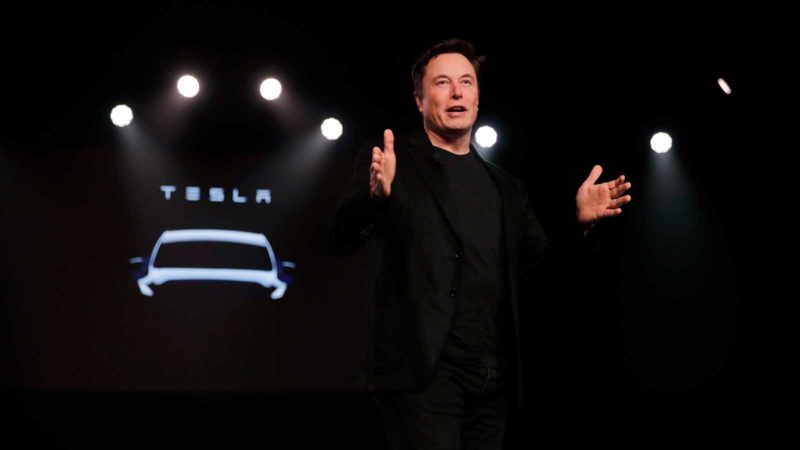A number of significant tidbits of information came forth from Tesla’s first quarter earnings report for 2020, which added together have confirmed just how far Tesla is ahead of the electric vehicle game.
Not least is the fact that the Californian auto maker has posted a modest but still positive $US16 million ($A24.5 million) profit, even amid the economic challenges of the Covid-19 pandemic which has seen Tesla’s Model 3 factory in Fremont, Alameda County, shut down by government order to help contain the spread of the highly contagious virus.
Musk is railing against the extension of closures, going so far as to call the stay-at-home measures “fascist” during the company’s earnings call, but Tesla has fared better than fellow car makers Ford and GM and other auto makers have also faced factory closures, as noted by Giles Parkinson on Thursday.
Exactly
— Elon Musk (@elonmusk) May 1, 2020
While Musk’s opinions on how to get back to a flourishing economy as the pandemic seemingly comes under control in some US states have divided many, one thing is clear: following Musk’s vision, Tesla has already put itself in a position to ride the waves of the crisis.
And car makers are reportedly worried. CleanTechnica author Alex Voigt last Sunday shared on Twitter comments made by VW boss Herbert Diess in an internal meeting that Tesla’s autonomous driving systems was giving him a headache.
“500,000 Teslas function as a neural network that continuously collects data and offers the customer a new driving experience every 14 days, with improved features,”Diess was quoted as saying by Voigt.
“No other automaker can do that today.”
Diess showed his Top Managers a graph illustrating Tesla 2 times as high stock market valuation & explained Tesla did do that despite all the valuable brands like Porsche, Audi, Bentley..
Diess concluded his confidence Tesla to increase volumes
"We still have a long way to go."
— Alex (@alex_avoigt) April 26, 2020
Tesla, which has just released its latest Full Self Driving feature – the ability to detect and stop at traffic lights and stop signs – will soon be collecting data from 1 billion intersections a month as the feature is rolled out across markets, giving the company access to far more valuable and voluminous information about autonomous driving as drivers effectively label objects for Tesla as they drive.
No wonder car makers are worried.
Autonomous driving aside, other developments shared by Musk during the Q1 2020 earnings call also reveal Tesla’s strong hand.
Learnings from the ramping of production of Tesla’s first mass-volume electric car, the Model 3, have afforded the car maker the opportunity to leapfrog ahead of its own production schedule for its next mass-volume vehicle, the Model Y.
First deliveries of the Model Y began a full three months ahead, and Musk reported that it is now Tesla’s first vehicle to become profitable in its first quarter of production, with more Model Ys produced in its first quarter than were Model 3s in its first two quarters.
“Thus the Model Y ramp has been even faster than the Giga Shanghai ramp,” said Musk. “In other words, we are ahead of the schedule that we were ahead of already.”
Both profits and Tesla’s ability to ramp production quickly can be attributed to the “incremental” efficiencies Musk has spoken about in past earnings calls, and which for the Model Y have been partially revealed by auto engineering expert Sandy Munro as he bit by bit tears down a Model Y to reveal cost cuts and improvements.
One significant improvement noted by Munro is the Model Y’s octovalve (see video at the bottom of this article), a key component of the Model Y’s heat pump which replaces the Model 3’s resistive heating system.
“We also introduced a revolutionary new heat pump which allows the [Model] Y to have better range,” said Musk, adding that it makes the Model Y’s driving range “slightly better than Model 3 despite being a bigger car that weighs more”.
Other efficiencies are in the works for the Model Y, says Musk, including a single piece casting for the rear third of the Model Y body that will also reduce the weight, cost and noise/vibration of the Model Y.
The Model 3 has not been left out of the picture, as Tesla continues to work towards localisation of parts in Shanghai, allowing it to drop the price of the made-in-China Model 3 to RMB291,800 ($A63,859 converted) so that Chinese drivers can access the country’s “new energy vehicle” subsidies.
Last but by no means least in the vehicle department came another announcement from Musk – that the Model S is now capable of 400 miles (643km) driving range, although according to Musk the EPA scored its official rating at 391 miles due to user error.
“The real Model S range is 400 miles, but when we took the last EPA test unfortunately the EPA left the car door open and the keys in car overnight so the car … lost 2% range,” he said.
“To be clear, for the Model S for the past two months, the true range has been 400 miles.”
Which leads to a final but possibly the most significant announcement from the Tesla Q1 2020 call: that with Battery Day is now slated for “the third week of May”, either in California or Texas depending on Covid-19 restrictions, and the latter location is a nod to an announcement expected in weeks around what may now be known as a “Tera-factory”.
“There will be a lot of exciting news to tell,” Musk said. “It will be one of the most exciting days in Tesla’s history.”

Bridie Schmidt is associate editor for The Driven, sister site of Renew Economy. She has been writing about electric vehicles since 2018, and has a keen interest in the role that zero-emissions transport has to play in sustainability. She has participated in podcasts such as Download This Show with Marc Fennell and Shirtloads of Science with Karl Kruszelnicki and is co-organiser of the Northern Rivers Electric Vehicle Forum. Bridie also owns a Tesla Model Y and has it available for hire on evee.com.au.

